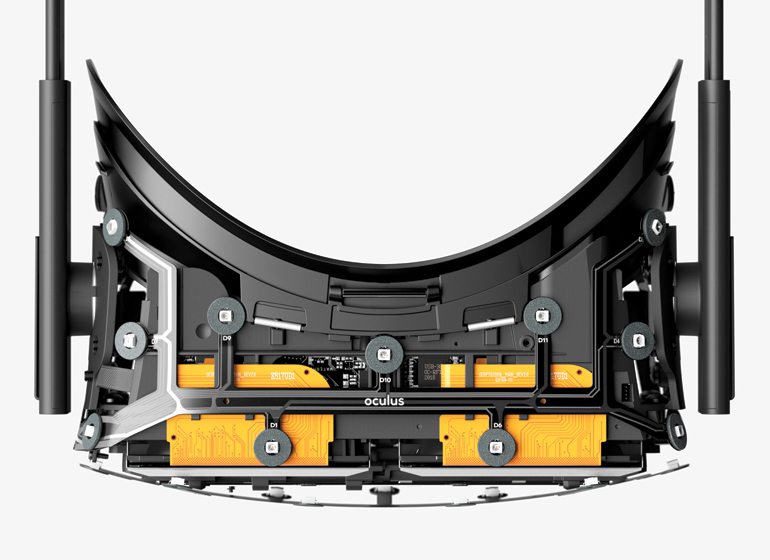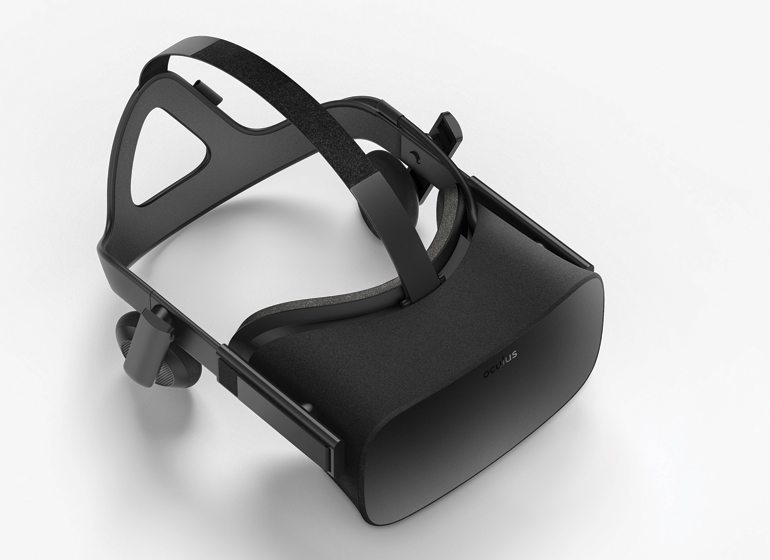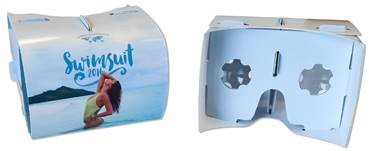When Quad/Graphics Inc. announced earlier this year it would be equipping 500,000 special newsstand versions of the Sports Illustrated swimsuit issue with virtual reality viewers, it may have seemed a little bit like a gimmick.
But for Tim Fox, director of custom products at Quad/Graphics, the SI viewer was just a starting point. He sees potential for any number of the Sussex-based printer’s thousands of clients. In particular, he said Quad has received a lot of inquiries from clients tied to travel. Whether it is for resorts, hotels, national parks or communities, Fox said there is a lot of value in allowing a user to be in the location before he or she travels there.

A company like Milwaukee-based Harley-Davidson Inc. could use virtual reality to show how a motorcycle is made, bring potential buyers into a dealership from the comfort of their home or virtually take them along on a motorcycle ride.
“You could have a virtual experience as if you were the gasoline moving through the engine,” he said.
Fox also sees uses in health care, agriculture, real estate and education.
Consulting firm Deloitte Global predicted virtual reality would have its first billion dollar year in 2016. The company expects there to be multiple applications for both consumers and businesses in the long term, but cautioned that enterprise use in 2016 would likely be experimental.
“Everybody is thinking a lot of great things about it,” said Kevin Wise, manager of solutions architects at Verizon, who is based in Milwaukee.
The challenge is deployment of the new technology, Wise said. As equipment costs come down and the number of applications and examples grows, “that’s when you’re going to start seeing a jump in use,” he said.
“I believe it’s going to get huge,” Wise said. “Marketing companies are going to be able to market to you as you walk through a virtual world.”
Wise’s role has him working with companies on potential technology solutions. He said he’s asked about virtual reality, but the technology is “not used as much as you’d expect.”
He sees potential training applications where a company can recreate a specific situation and put an employee or customer directly into it.
Fox says that many companies are already shooting video for their marketing materials. Making the video into something that can be used for virtual reality is a natural extension, in his view.
“Let it be a recruiting tool for you,” he said.
The University of Wisconsin-Milwaukee College of Engineering and Applied Science is doing just that. The college partnered with virtual reality firm YouVisit to create a virtual tour that allows prospective students to see inside the university’s labs and classrooms.
“We can’t just open our labs and go in, for a number of reasons,” said Sandra Nichols, the college’s associate dean and director of marketing, citing proprietary research taking place through business partnerships, along with safety and compliance issues. “This gives us an opportunity to make our labs accessible.”
The college rolled out the virtual reality tour in late August 2015. There have been almost 3,000 uses of the tour. While the college is still gathering data on whether students have chosen the school because of the tour, Nichols said the college knows it can be among the 20 to 40 interactions students use in making their decision.

“We believe it’s really important for us to be at least testing new vehicles and new technologies,” she said. “We have to change with the times to be able to reach and communicate with the younger generation.”
The process for putting together the virtual reality tour was similar to other promotional materials. YouVisit came to campus and took 360-degree photos of the labs over the course of two days. The company now handles the responsibility of hosting the tour.
Fox believes producing content will only get easier in the coming years. With cameras already on the front and back of smartphones, he thinks it won’t be long until the cameras also shoot to the sides, up and down, potentially all at the same time.
“You’ll have millions of people able to create content (for virtual reality),” he said.
Both Fox and Wise see the improvement of virtual reality viewers and the lowering of costs increasing the adoption of virtual reality.
Right now, the viewers range in price from hundreds or thousands of dollars for complete systems like Oculus Rift, to $15 for holders like Google Cardboard, to Quad’s viewer, which can be inserted into magazines for a couple of dollars.
 The advantage to Quad’s system, Fox said, is that it can easily be sent through the mail and branding is also a possibility.
The advantage to Quad’s system, Fox said, is that it can easily be sent through the mail and branding is also a possibility.
Quad has already completed a second version of the viewer that assembles easier, Fox said, and he anticipates additional versions will be developed in the future.
“Like any new products, you just continue to evolve them and develop them better,” he said of viewers.

